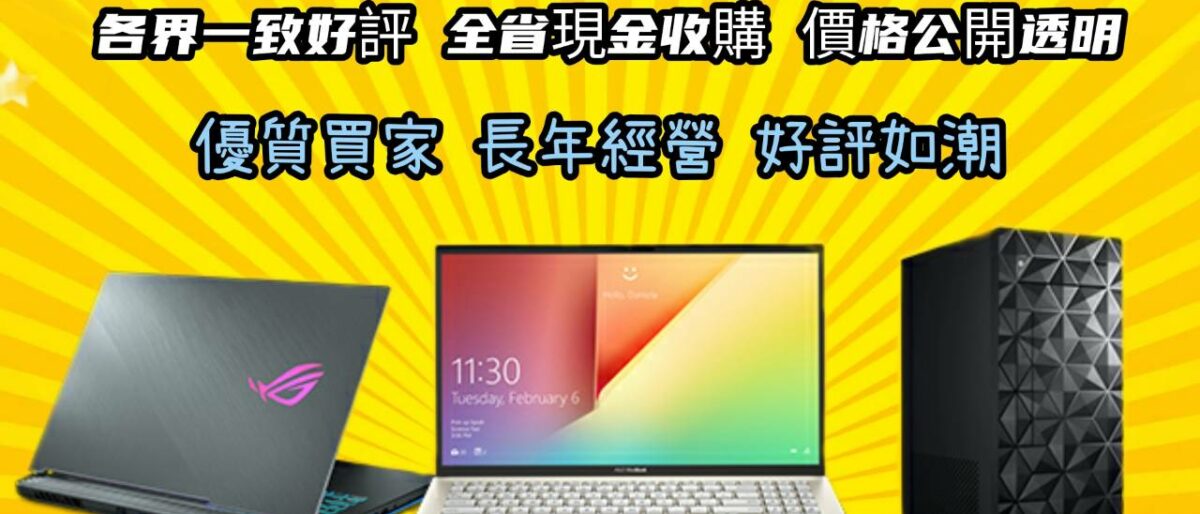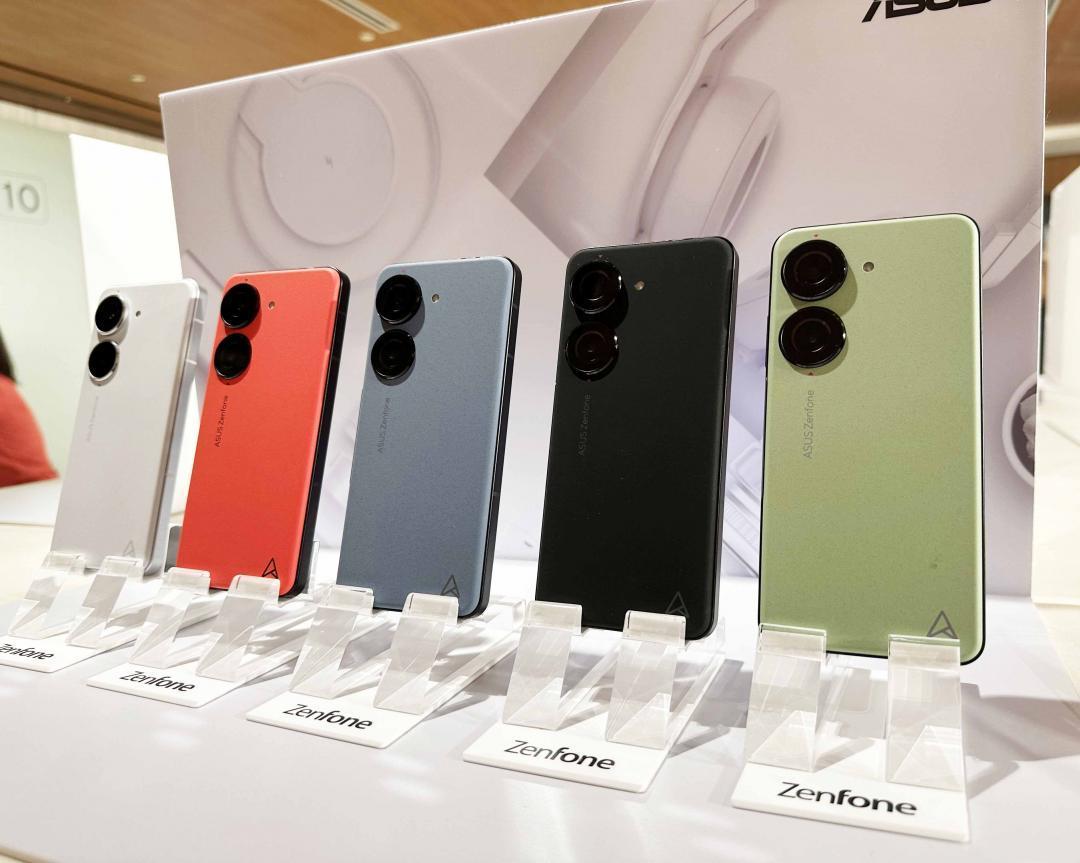各款式 全新筆電收購 收購ASUS筆電 收購ROG電競筆電 收購ACER筆電 收購Msi電競筆電 收購微軟SU 看全文

我們專業經營各項3C高價回收,收購電競筆電,文書筆電,輕薄筆 電,MSI,ASUS,ACER,HP,Razer,GIGABYBE,Microsoft,,多通路多管道,非坊間垃圾回收價,價格不怕您比較,歡迎企業戶汰舊換新,續約販賣,分期換現,電競筆電, 二手汰舊,手機,筆電,相機,鏡頭,空拍機
全新筆電收購
ardware and software features to the tried-and-true PC platform, but the definition of an AI PC has been a bit elusive. Numerous companies, including Intel, AMD, Apple, and soon Qualcomm with its X Elite chips, have developed silicon with purpose-built AI accelerators residing on-chip alongside the standard CPU and GPU cores. However, each has its own take on what constitutes an AI PC.
Microsoft’s and Intel’s new co-developed definition states that an AI PC will come with a Neural Processing Unit (NPU), CPU, and GPU that support Microsoft’s Copilot and come with a physical Copilot key directly on the keyboard that replaces the second Windows key on the right side of the keyboard. Copilot is an AI chatbot powered by an LLM that is currently being rolled into newer versions of Windows 11. It is currently powered by cloud-based services, but the company reportedly plans to enable local processing to boost performance and responsiveness. This definition means that the existing Meteor Lake and Ryzen laptops that have shipped without a Copilot key actually don’t meet Microsoft’s official criteria, though we expect Microsoft’s new definition to spur nearly universal adoption of the key.
While Intel and Microsoft are now promoting this jointly developed definition of an AI PC, Intel itself has a simpler definition that says it requires a CPU, GPU, and NPU, each with its own AI-specific acceleration capabilities. Intel envisions shuffling AI workloads between these three units based on the type of compute needed, with the NPU providing exceptional power efficiency for lower-intensity AI workloads like photo, audio, and video processing while delivering faster response times than cloud-based services, thus boosting battery life and performance while ensuring data privacy by keeping data on the local machine. This also frees the CPU and GPU for other tasks. The GPU and CPU will step in for heavier AI tasks, a must as having multiple AI models running concurrently could overwhelm the comparatively limited NPU. If needed, the NPU and GPU can even run an LLM in tandem.
AI models also have a voracious appetite for memory capacity and speed, with the former enabling larger, more accurate models while the latter delivers more performance. AI models come in all shapes and sizes, and Intel says that memory capacity will become a key challenge when running LLMs, with 16GB being required in some workloads, and even 32GB may be necessary depending on the types of models used.
Naturally, that could add quite a bit of cost, particularly in laptops, but Microsoft has stopped short of defining a minimum memory requirement yet. Naturally, it will continue to work through different configuration options with OEMs. The goalposts will be different for consumer-class hardware as opposed to workstations and enterprise gear, but we should expect to see more DRAM on entry-level AI PCs than the standard fare — we may finally bid adieu to 8GB laptops.(Image credit: Intel)Intel says that AI will enable a host of new features, but many of the new use cases are undefined because we remain in the early days of AI adoption. Chatbots and personal assistants trained locally on users’ data are a logical starting point, and Nvidia’s Chat with RTX and AMD’s chatbot alternative are already out there, but AI models running on the NPU can also make better use of the existing hardware and sensors present on the PC.
For instance, coupling gaze detection with power-saving features in OLED panels can enable lower refresh rates when acceptable, or switch the screen off when the user leaves the PC, thus saving battery life. Video conferencing also benefits from techniques like background segmentation, and moving that workload from the CPU to the NPU can save up to 2.5W. That doesn’t sound like much, but Intel says it can result in an extra hour of battery life in some cases.
Other uses include eye gaze correction, auto-framing, background blurring, background noise reduction, audio transcription, and meeting notes, some of which are being built to run on the NPU with direct support from companies like Zoom, Webex, and Google Meet, among others. Companies are already working on coding assistants that learn from your own code base, and others are developing Retrieval-Augmented Generation (RAG) LLMs that can be trained on the users’ data, which is then used as a database to answer search queries, thus providing more specific and accurate information.
Other workloads include image generation along with audio and video editing, such as the features being worked into the Adobe Creative Cloud software suite. Security is also a big focus, with AI-powered anti-phishing software already in the works, for instance. Intel’s own engineers have also developed a sign-language-to-text application that uses video detection to translate sign language, showing that there are many unthought-of applications that can deliver incredible benefits to users.The Core Ultra Meteor Lake Dev Kit(Image credit: Intel)The Intel dev kit consists of an 全新筆電收購asus NUC Pro 14 with a Core Ultra Meteor Lake processor, but Intel hasn’t shared the detailed specs yet. We do know that the systems will come in varying form factors. Every system will also come with a pre-loaded software stack, programming tools, compilers, and the drivers needed to get up and running.
Installed tools include Cmake, Python, and Open Vino, among others. Intel also supports ONNX, DirectML, and WebNN, with more coming. Intel’s OpenVino model zoo currently has over 280 open-source and optimized pre-trained models. It also has 173 for ONNX and 150 models on Hugging Face, and the most popular models have over 300,000 downloads per month.Expanding the EcosystemImage 1 of 4(Image credit: Intel)(Image credit: Intel)(Image credit: Intel)(Image credit: Intel)Intel is already working with its top 100 ISVs, like Zoom, Adobe and Autodesk, to integrate AI acceleration into their applications. Now it wants to broaden its developer base to smaller software and hardware developers — even those who work independently.
To that end, Intel will provide developers with its new dev kit at the conferences it has scheduled around the globe, with the first round of developer kits being handed out here in Taipei. Intel will also make dev kits available for those who can’t attend the events, but it hasn’t yet started that part of the program due to varying restrictions in different countries and other logistical challenges.
These kits will be available at a subsidized cost, meaning Intel will provide a deep discount, but the company hasn’t shared details on pricing yet. There are also plans to give developers access to dev kits based on Intel’s future platforms.
Aside from providing hardware to the larger dev houses, Intel is also planning to seed dev kits to universities to engage with computer science departments. Intel has a knowledge center with training videos, documentation, collateral, and even sample code on its website to support the dev community.
Intel is engaging with Independent Hardware Vendors (IHVs) that will develop the next wave of devices for AI PCs. The company offers 24/7 access to Intel’s testing and process resources, along with early reference hardware, through its Open Labs initiative in the US, China, and Taiwan. Intel already has 100+ IHVs that have developed 200 components during the pilot phase.
ISVs and IHVs interested in joining Intel’s PC Acceleration Program can join via the webpage. We’re here at the event and will follow up with updates as needed.Stay on the Cutting EdgeJoin the experts who read Tom’s Hardware for the inside track on enthusiast PC tech news — and have for over 25 years. We’ll send breaking news and in-depth reviews of CPUs, GPUs, AI, maker hardware and more straight to your inbox.Contact me with news and offers from other Future brandsReceive email from us on behalf of our trusted partners or sponsorsBy submitting your information you agree to the Terms & Conditions and Privacy Policy and are aged 16 or over.
Paul AlcornSocial Links NavigationManaging Editor: News and Emerging TechPaul Alcorn is the Managing Editor: News and Emerging Tech for Tom’s Hardware US. He also writes news and reviews on CPUs, storage, and enterprise hardware.
See more CPUs News
More about cpusAMD may have a new platform for upcoming Ryzen CPUs — AM5+ socket and Granite Ridge CPUs listed in a microcode extraction toolAMD claims LLMs run up to 79% faster on Ryzen 8040 CPUs compared to Intel’s newest Core Ultra chipsLatestAIO workstation has 128 CPU cores and 28,416 GPU cores crammed into surprisingly small form factorSee more latest ►
TOPICS
AI PC
Meteor Lake
See all comments (10)
10 Comments
Comment from the forums
hotaru251
So by their own slide they basically say only intel PC’s can be ai pcs? As doesn’t say a system w/ this stuff but specifically an intel one.
Reply
usertests
hotaru251 said:So by their own slide they basically say only intel PC’s can be ai pcs? As doesn’t say a system w/ this stuff but specifically an intel one.AMD and Qualcomm can meet these requirements.
On Intel’s side, maybe Intel Core Ultra is the only brand that qualifies (for now).
Reply
-Fran-
So Microsoft ready to screw AMD yet again? XD
AMD, come on… Haven’t you ever heard of “fool me once…”?
Help Valve grow SteamOS and Microsoft will come begging your way.
Regards.
Reply
cknobman
Intel better start focusing on ditching x86 or at least diversifying and limiting its use cases.
In anything other than the most demanding workloads ARM is taking over fast.
So Intels AI will be irrelevant to most regular consumers who are buying ARM based PC’s.
Reply
NeoMorpheus
-Fran- said:So Microsoft ready to screw AMD yet again? XD
AMD, come on… Haven’t you ever heard of “fool me once…”?
Help Valve grow SteamOS and Microsoft will come begging your way.
Regards.Came here just to say the same thing.
I honestly thing that MS is waiting for intel to have a better gpu so they can dump AMD on the next Xbox.
AMD needs to stop being nice and start being more selfish.
Reply
usertests
If you guys are not joking and are taking the Intel marketing slide at face value, then you can’t be saved.
Reply
TerryLaze
cknobman said:Intel better start focusing on ditching x86 or at least diversifying and limiting its use cases.
In anything other than the most demanding workloads ARM is taking over fast.
So Intels AI will be irrelevant to most regular consumers who are buying ARM based PC’s.ARM has been “taking over fast” since the 60ies…
Also I don’t know if you were sleeping the last years but miniPCs and handhelds with x86 have practically flooded the market, so x86 is taking over a good chunk of what used to be an arm only domain.
Reply
Roland Of Gilead
Would it be possible to have an NPU on an add in card like PCIE to enable it’s use on those older systems that don’t have a native NPU? I wonder would PCIE be fast enough to shift the workloads around, or
 華碩宣布為Zenfone 10推送Android 14升級。(圖/資料照)
華碩宣布為Zenfone 10推送Android 14升級。(圖/資料照)
華碩宣布正式為Zenfone 10推送Android 14,官方提醒需由系統版本33.0220.0220.101進行升級,系統完成自動推送約需一周,未收到推播更新,可進入「設定」-「關於」-「系統更新」進行手動更新。重要的是,升級前先備份資料。
升級Android 14後,華碩也為ZenFone 10開放支援WiFi 6E功能。另外,除了添加一些新功能,像是調整電池用量顯示方式,可以查看區間的應用程式使用資訊,也修復了一些問題,包括改善擴音通話回音問題、優化藍牙耳機偶發斷連與雜訊問題,以及修正全新筆電收購asus 客製化電源選單畫面上沒有重新啟動與關機選項。
● 升級前請先將資料進行備份;部分第三方軟體與Android 14尚不相容。
● 升級系統至 Android 14。
● 更新智能管家、聯絡人、電話、緊急電話、檔案管理、計算機、時鐘、圖片庫、天氣、錄音程式、設定、一鍵換機、本機備份、桌面等應用程式。
● 支援鎖定螢幕小時鐘的顏色與亮度客製化。
● 支援新的相片和影片權限與系統相片選取器,可以進一步控管應用程式存取相關資訊。
● 調整電池用量顯示方式,可以查看區間的應用程式使用資訊。
● 改善擴音通話回音問題。
● 優化藍牙耳機偶發斷連與雜訊問題。
● 修正全新筆電收購asus客製化電源選單畫面上沒有重新啟動與關機選項。
全新筆電收購 全新筆電收購